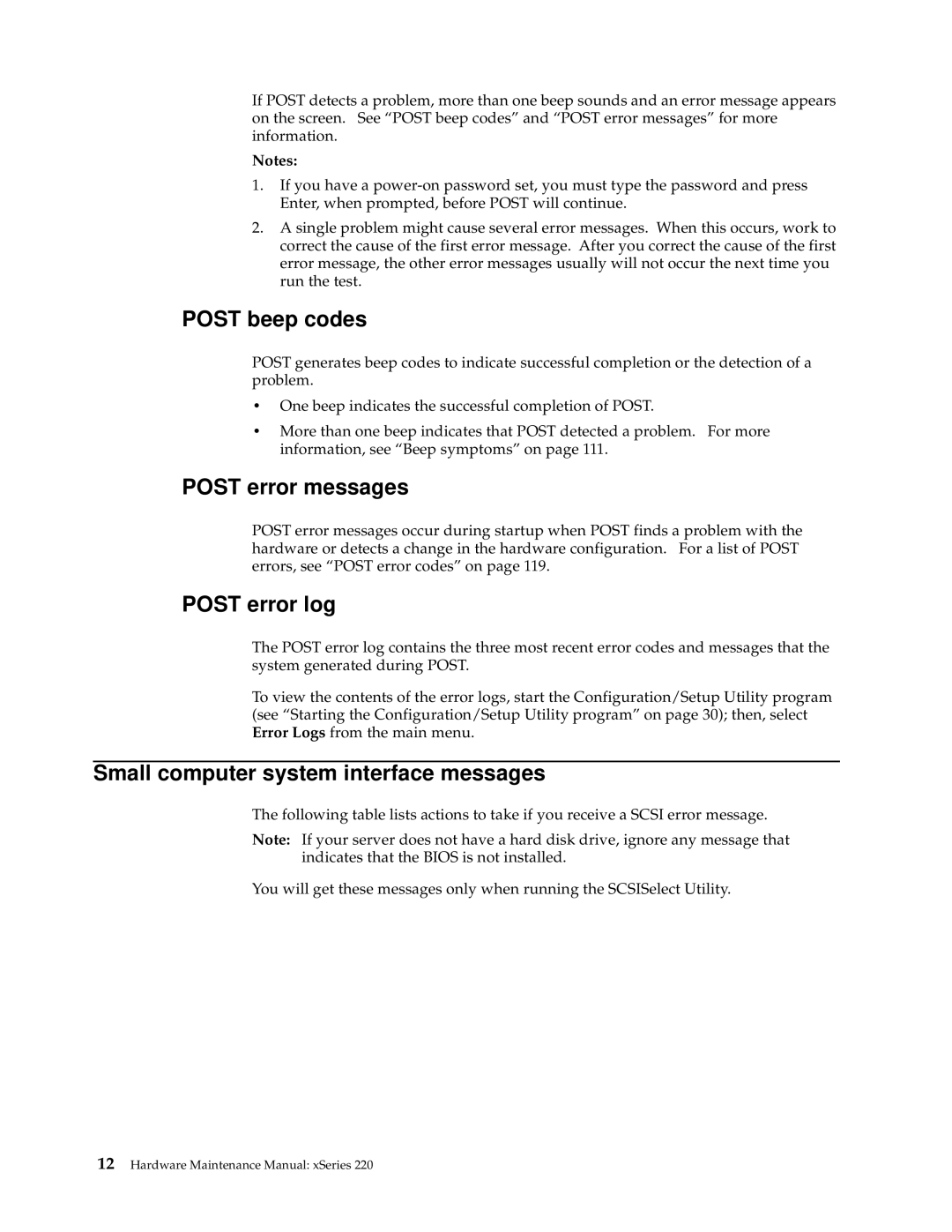If POST detects a problem, more than one beep sounds and an error message appears on the screen. See “POST beep codes” and “POST error messages” for more information.
Notes:
1.If you have a
2.A single problem might cause several error messages. When this occurs, work to correct the cause of the first error message. After you correct the cause of the first error message, the other error messages usually will not occur the next time you run the test.
POST beep codes
POST generates beep codes to indicate successful completion or the detection of a problem.
•One beep indicates the successful completion of POST.
•More than one beep indicates that POST detected a problem. For more information, see “Beep symptoms” on page 111.
POST error messages
POST error messages occur during startup when POST finds a problem with the hardware or detects a change in the hardware configuration. For a list of POST errors, see “POST error codes” on page 119.
POST error log
The POST error log contains the three most recent error codes and messages that the system generated during POST.
To view the contents of the error logs, start the Configuration/Setup Utility program (see “Starting the Configuration/Setup Utility program” on page 30); then, select Error Logs from the main menu.
Small computer system interface messages
The following table lists actions to take if you receive a SCSI error message.
Note: If your server does not have a hard disk drive, ignore any message that indicates that the BIOS is not installed.
You will get these messages only when running the SCSISelect Utility.
